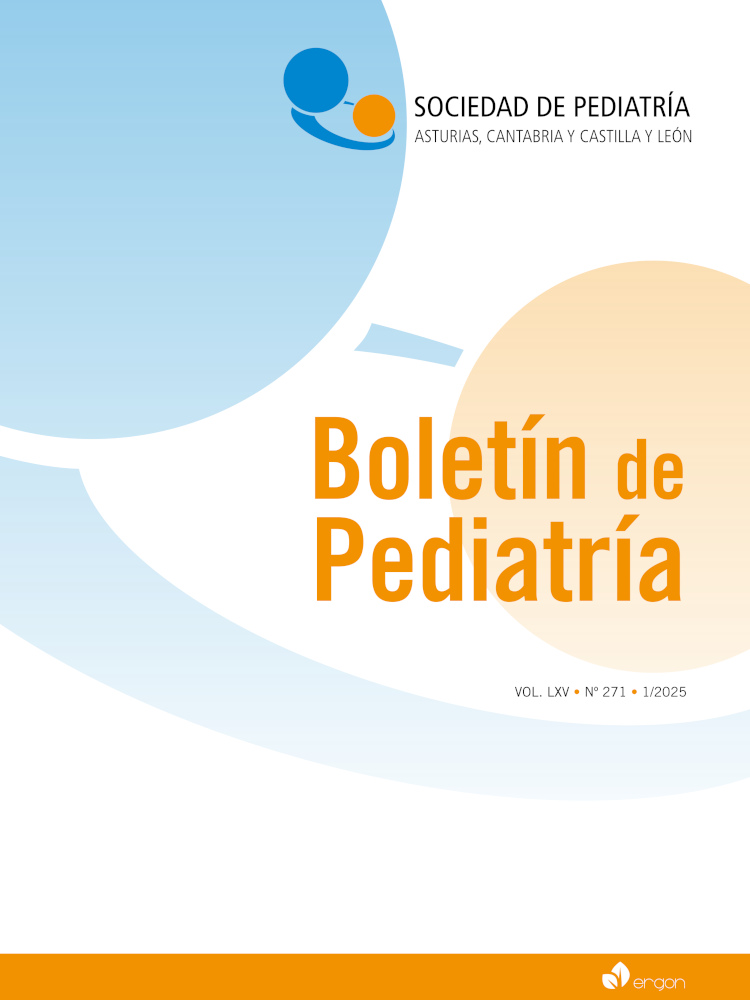Abstract
The adoption of prophylaxis measures has reduced Vertical Transmission (TV) to less than 1% in Spain in the children of women with HIV (MVIH) New cases of infection are usually due to failures in the implementation of TV prevention measures during pregnancy. Although plasma viral load (CVp) close to delivery is the most important risk factor in VT, there are other factors to consider, such as prematurity, type of delivery, time of rupture of the water... and maternal clinical situation, including primary infection during pregnancy. These factors are minimized if undetectable pCV (< 50 copies/ml) is reached before delivery after antiretroviral treatment (ART) during pregnancy. In addition, postnatal prophylaxis with antiretrovirals (ARV) as monotherapy or combination therapy has been shown to be effective in reducing HIV VT in combination with previous measures and as the only measure in the case of newborns of an HIV-infected mother who did not receive antepartum/intrapartum prophylaxis measures. In recent years, the use of triple therapy in high-risk cases of TV has increased. Postnatal prophylaxis should be started as soon as possible, and it is recommended to start in the first 4-6 hours of life. In low-risk newborns, prophylaxis has been simplified to 2-4 weeks of oral AZT (zidovudine). As for the feeding of these newborns born to MVIH, exclusive artificial breastfeeding is currently the only form of feeding that does not involve risk of transmission and is the recommended feeding method in our environment.
The real risk of mother-to-child transmission of HIV associated with breastfeeding in the context of universal ART, adherence to treatment, and undetectable plasma viral load (pCV) is unknown. It is below 1%, but it is not zero. Currently, breastfeeding could be considered non-contraindication only if all of the following conditions are met: history of adherence to excellent ART; viral suppression for as long as possible, and at least the third trimester of pregnancy; commitment to postpartum bonding and the possibility of breastfeeding support and/or previous breastfeeding experience; availability of accessible lactation consultants to respond to unforeseen situations; close analytical control with monthly qvP in the mother until the end of the lactation period and a viral load recommended 2 months after the end of breastfeeding.
References
Illán Ramos M, Mazariegos Orellana D, Prieto Tato LM, Navarro-Gomez ML, Gómez ML, Muñoz Gálligo E, et al. Clinical and epidemiologic characteristics of a cohort of HIV-infected mother-infant pairs during 21 years. J Acquir Immune Defic Syndr. 2022; 91: 479-84.
Chiappini E, Galli L, Giaquinto C, Ene L, Goetghebuer T, Judd A, et al. Use of combination neonatal prophylaxis for the prevention of mother-to-child transmission of HIV infection in European high-risk infants. AIDS. 2013; 27: 991-1000.
Panel on Treatment of HIV during pregnancy and prevention of perinatal transmission. Recommendations for use of antiretroviral drugs during pregnancy and interventions to reduce perinatal transmission in the United States. Disponible en: https://clinicalinfo.hiv.gov/en/guidelines/perinatal/management-infants-arv-hiv-exposure-infection [consultado 10/03/2025].
Guilleece Y, Tariq S, Bamford A, Bhagani DS, Byrne DL, Clarke DE, et al. British HIV Association and Children’s HIV Association guidelines for the management of HIV infection in pregnancy and postpartum 2018. HIV Med. 2019; 20: 2-85.
Sainz T, Martín Carbonero L, Suy A, López M, de Alba Romero C, Epalza C, et al. Lactancia materna en el recién nacido expuesto al VIH: recomendaciones y seguimiento madre-hijo. SEIP-AEP, SEGO, SEIMC-GESIDA; 2025.
Soler Simón JA, Prieto Tato LM, Illán Ramos M, Ramos Amador JT. VIH. Prevención de la transmisión vertical (profilaxis posnatal con antirretrovirales). (v.3.0/2024) Guía_ABE. Infecciones en Pediatría. Guía rápida para la selección del tratamiento antimicrobiano empírico [en línea]. Disponible en https://www.guia-abe.es/ [actualizado el 11/04/2024; consultado el 04/04/2025].
Grupo de expertos de la División de control de VIH, ITS, Hepatitis virales y Tuberculosis (DCVIHT), Sociedad Española de Ginecología y Obstetricia (SEGO), Grupo de Estudio de Sida (GeSIDA) y Sociedad Española de Infectología Pediátrica (SEIP). Documento de consenso para el seguimiento de la infección por el VIH en relación con la reproducción, embarazo, parto y profilaxis de la transmisión vertical del niño expuesto. Diciembre 2023. Disponible en: http://gesida-seimc.org/wp-content/uploads/2021/01/Documento-de-consenso-para-el-seguimiento-de-lainfeccion-po-vih-en-relacion-con-reproducion-embarazo-parto.pdf [consultado marzo 2025].
World Health Organization. Updates on HIV and infant feeding guidelines. 2016. Disponible en: www.who.int/maternal_child_adolescent/documents/hiv-infant-feeding 2016 [consultado marzo 2025].
Panel on Treatment of HIV During Pregnancy and Prevention of Perinatal Transmission. Recommendations for the use of antiretroviral drugs during pregnancy and interventions to reduce perinatal HIV transmission in the United States. Disponible en: https://clinicalinfo.hiv.gov/en/guidelines/perinatal/ [consultado marzo 2025].
Flynn PM, Taha TE, Cababasay M, Fowler MG, Mofenson LM, Owor M, et al. Prevention of HIV-1 transmission through breastfeeding: Efficacy and safety of maternal antiretroviral therapy versus infant nevirapine prophylaxis for duration of breastfeeding in HIV-1-infected women with high CD4 cell count (IMPAACT PROMISE): A randomized, open-label, clinical trial. J Acquir Immune Defic Syndr. 2018; 77: 383-92.
Powell AM, Knott-Grasso MA, Anderson J, Livingston A, Rosenblum N, Sturdivant H, et al. Infant feeding for people living with HIV in high resource settings: a multi-disciplinary approach with best practices to maximise risk reduction. Lancet Reg Health Am. 2023; 22: 100509.
Secretaría de Estado de Sanidad. Resolución de 25 de julio de 2023, por la que se publica el Convenio con la Asociación Nacional de Fabricantes de Productos de Dietética Infantil y la Fundación Española de Pediatría, para la dispensación gratuita de leche de fórmula adaptada para lactantes expuestos al VIH. BOE [Internet]. 2023 ago 1 (182): 114110-5. Disponible en: https://www.boe.es/boe/días/2023/08/01/pdfs/BOE-A-2023-17731.pdf [consultado el 18 de marzo de 2025].

This work is licensed under a Creative Commons Attribution-NonCommercial 4.0 International License.
Copyright (c) 2025 Boletín de Pediatría
